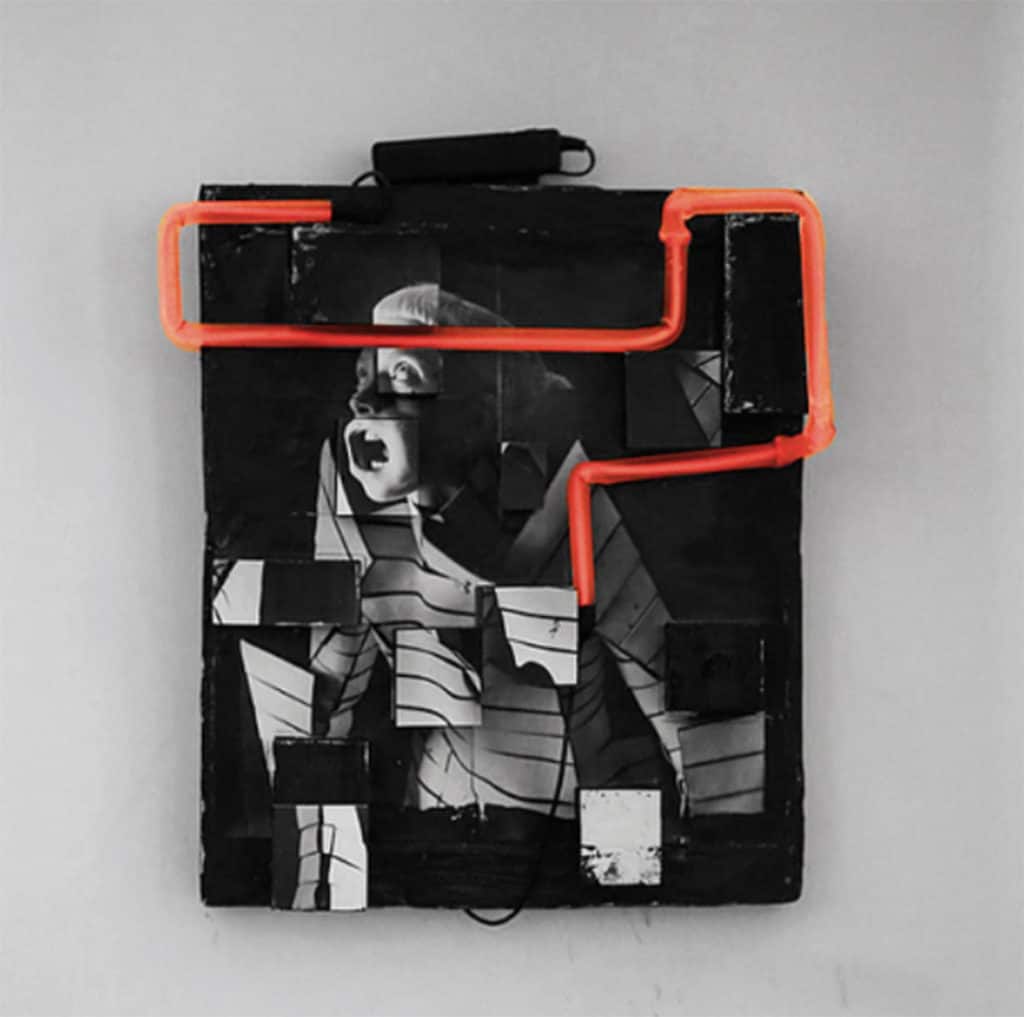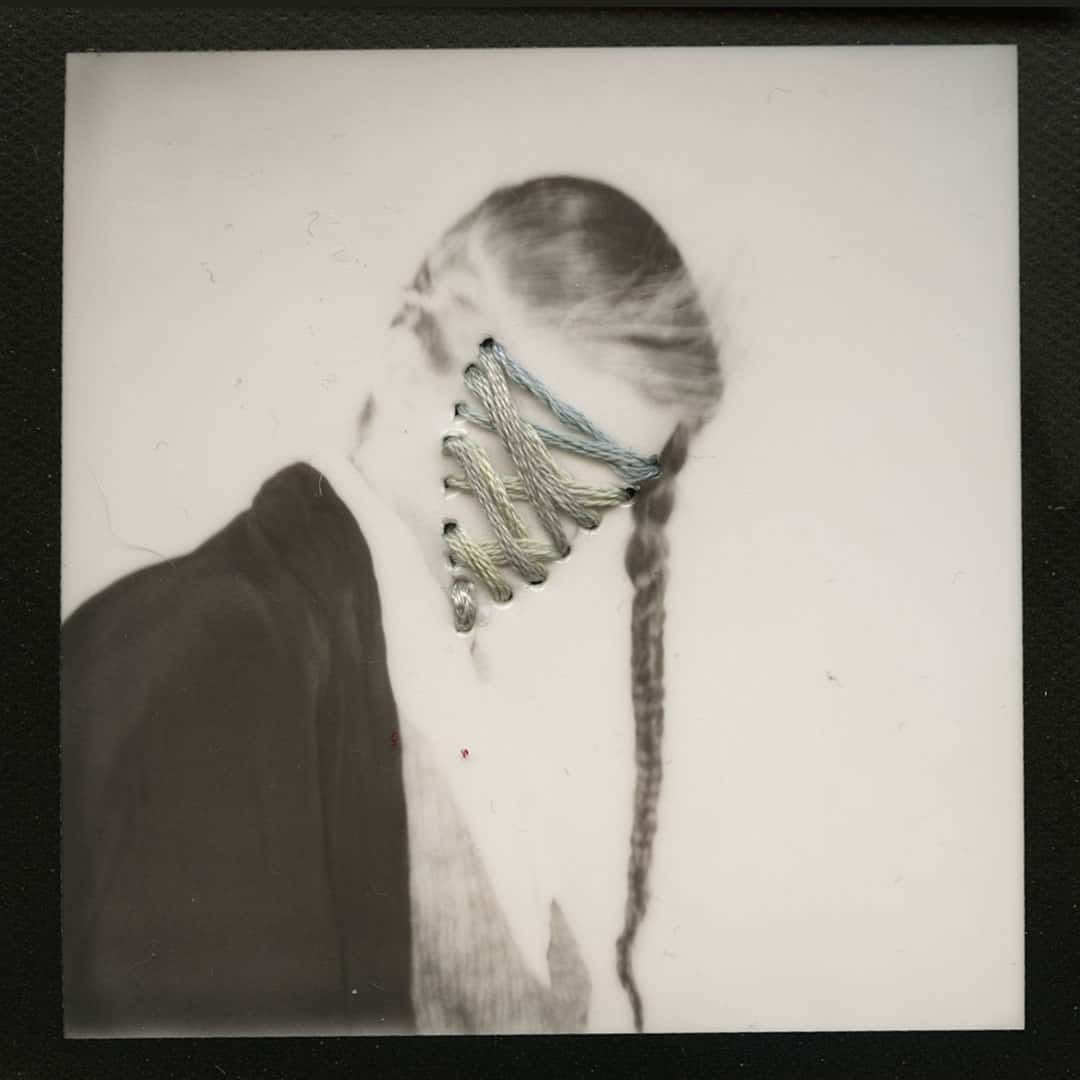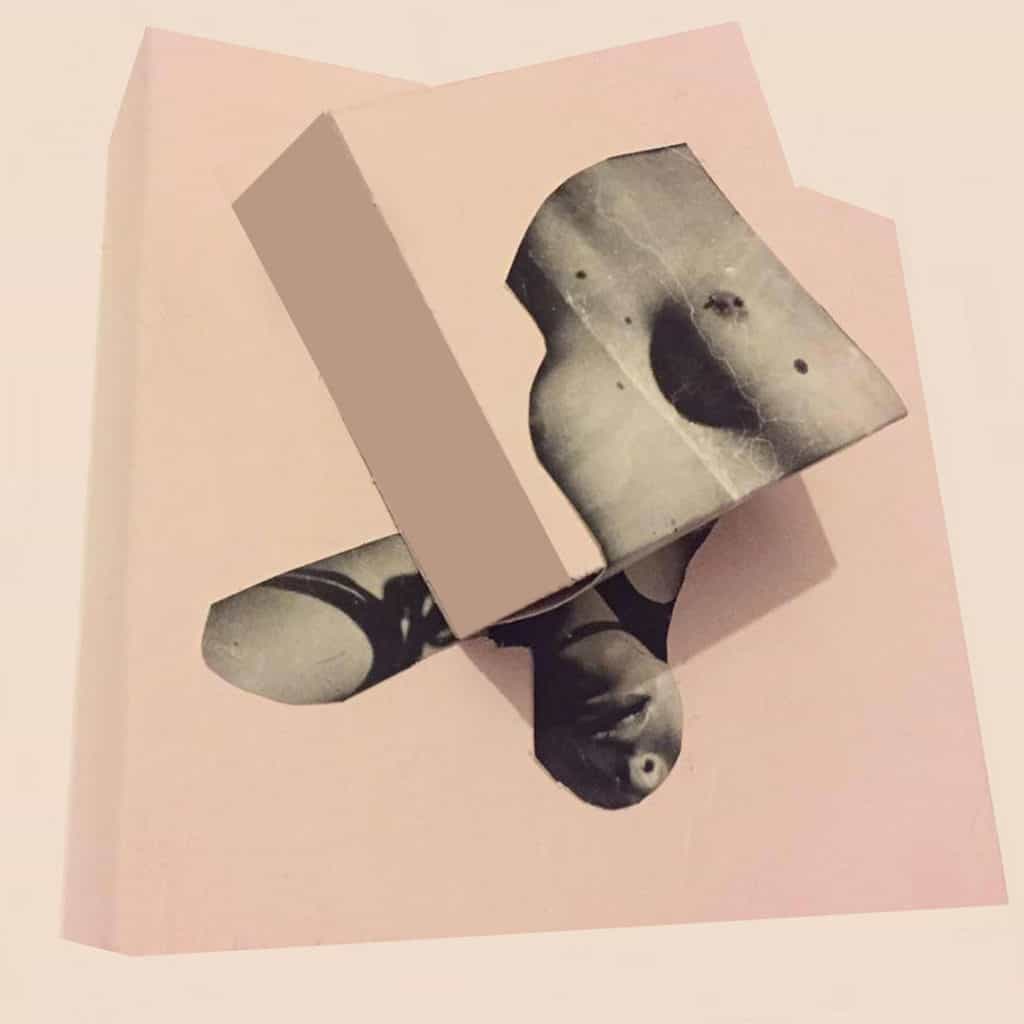In “The Shell and the Kernel”, psychoanalysts Karl Abraham and Maria Torok argue a theory of a concealment of trauma, a ‘transgenerational phantom’ burrowed beneath an individual’s consciousness. One might be affected by what has not been preserved, what has been forced to the back of one’s mind. Although I was born in London in the early 90s, growing up in accordance with the veil of Western democratic progression, morsels of buried spectres beckoning Poland’s martial law and Communist regime seep through now and then in the mutterings of my relative elders. Only recently had I the privilege of my mother dishing out her crumb of repressed young adulthood spent queuing with rations for a pair of jeans, a peculiarity that made her past seem so much further away from mine than I had ever previously imagined. The most unremarkable pair of jeans, she adds, her friend had them, and so did her friend’s friend. A uniform existence, choice was unheard of in early 80s Poland.
But what happens when one attempts to bore into the past and confront one’s dormant memories? Paulina Otylie-Surys is an interdisciplinary artist, who ruffles the boundaries of photography, painting and mixed-media installation to interrogate questions of identity, memory, and belonging. Her most recent project Dreamatorium delves into the phantoms of her early childhood growing up during the Polish People’s Republic. Despite being only a few years old, Otylie-Surys recalls tanks in the streets of her hometown Leszno. This visceral encounter is reignited in her mixed-media installation, where wallpaper in a dizzying pattern of raw red meat cloys to the walls and dances with an ornate Soviet rug, greeting the viewer as they enter the space. Old Communist family portraits stud the skin of the red room. Upon closer inspection the focal points of the ephemera have been violated; in place of subjects of love and tenderness is meat. Becoming the affective exchange between people, Otylie-Surys emphasises the currency meat bore in Communist Poland. Photography thus becomes a medium for processing, but also exploiting the past. At once familiar and not, the image may be manipulated to the artists’ desires as a means of addressing unspoken truths. I interview Otylie-Surys about her practice and the changing role photography plays today.

Maggie Kuzan: Many of your works recall the haunted and otherworldly qualities of 19th Century photography. How much do you exploit the medium of photography in your practice to create something that is at once both familiar and not?
Paulina Otylie-Surys: Perhaps the most interesting aspect of utilising old techniques (or vernacular, archival images) is the exploration of this hidden, fear-filled reverse of nostalgia. Archaic technology, old recording techniques charm with soft light and warm colours of polaroids, but they can also scare. If they belong to the domain of the past, it means that they are in contact with death, that we deal with dead matter. So nostalgic technology becomes a carrier of additional horror in my pieces, it is as much terrifying as comforting the viewer thanks to its aspect of being something ‘not new’, ‘familiar’. By using such a medium it is much easier to trick the viewer into accepting the subject of the photograph as truth, as fabricating false memories. Cameras are fantasy machines, which give people pasts that may be unreal.
M.K.: By looking at your photographs, one can discern that you have a fine art background, having studied painting at the Academy of Fine Arts in Wroclaw, Poland. They tease the borders between traditional painting and photography – there is a formality and orderliness in many of them – such as your reimagining of Hieronymus Bosch’s The Garden of Earthly Delights (2012). Do you think it is important for an artist working today to have an appreciation and understanding of the traditions of fine art and painting?
P.O-S.: Photography is very young discipline and we are still scratching the surface of it. It has existed for long time strictly within its own traditional threshold. An interdisciplinary approach is very challenging shift, enabling to make meaningful connections and great opportunities to generate new insights into a subject and push new boundaries.

Paulina Otylie Surys, , “Dreamatorium” series, 2017 – manipulated vernacular photograph
M.K.: Your project Phenomena of False Memories is a response to the disposable culture social media has instigated on the image. As Susan Sontag states, “one of the characteristics of modernity is that people like to feel they can anticipate their own experience.” Indeed, we can say that our smartphones and Instagram apps feed us endless images that we become anaesthetised to them – they become disposable, forgettable. Can you recall your reason for undertaking this project?
P.O-S.: I have always been fascinated by the power of deception in photography, the faking of reality, (however photographs also display evidence). The culture of social media relies on such deception – we live in era of the “society of the spectacle”, as Guy Debord predicted. Every day we are exposed to a considerable amount of images on social media and the internet, they flicker in front of our eyes rapidly just to vanish into the vast abyss. The ever-present presence-absence. Very rarely we are exposed to their physical medium – tactile objects, prints. Such circumstances cause our attention spans towards images to decrease, we are very rarely really looking, appreciating the piece, soaking up its atmosphere.
I started Phenomena of False Memories as a response to the current obsession with (2D) computer and smart phone screens. The photo-objects/3D pieces have been made as a response to the short attention spam towards images I mentioned above. In a culture of speed dating, quick fixes, fast food and increasing cases of Attention Deficit Hyperactivity Disorder (ADHD) being an effect of a civilisation that prefers those who can synchronously tweet/chat/Email/Skype – an affluence of data creates a deficiency of attention. The 3D construction of the pieces interferes with human perception and forces the viewer to take their time, look longer and repeatedly rediscover the image. Contemplating upon my inability to recollect events or faces, and imagining how my memories have been modified, I started rebuilding my memories based on reminiscences of the past. The memories were misplaced, like pieces of puzzles missing and reappearing again. Although time can be frozen in a photograph, I wanted to emphasise that the image is not truly indicative of one’s perception or capacity to remember, and in order to do so it should be modified. Altered photographs have the ability to reshape memories or stimulate new inaccurate impressions. The separation and displacement of imagery explores notions of displacement and belonging, and also suggesting a sense of movement. The viewers are encouraged to enter the image and create their own experience and assign new connotations.
M.K.: What first attracted me to your work was the prevalence of the grotesque and voyeurism. As viewers, we are constantly being teased by an absence or lack of the full subject in your works. Cube-like forms replace faces as sinister masks (Phenomena of False Memories) and swathes of vermilion latex cloak female torsos (Spit or Swallow). What are your motives behind creating these pieces?
P.O-S.: Yes, I am aware that my pieces may be seen as ‘uncomfortable’ and ‘scary’. I often combine a soothing feeling of familiarity (the analogue ‘nostalgic’ medium) with something very disturbing, uncanny, creating a ghostly presence-absence. In my opinion it is very important to take the viewer outside of their comfort zone, outside of their daily routines and expectations. It is a great way to make a powerful statement. There is always something magnetic about things that are a bit of a taboo, something strange we do not really accept, but somehow we return to the subject and look at it again and again, in an almost voyeuristic manner. Such an amendment to our visual habits carries the audience off into a fragile situation, moving beyond what we are used to.
M.K.: In your work there is a repetition of fragmenting and contorting the human body – in particular the female body – in fantastical ways, through collage and mixed media techniques – such as the integration of latex and PVC in your series Spit or Swallow (2016 – ongoing) and in Phenomena of False Memories (2016 – ongoing). What is your intention of your manipulating, cutting, collaging of the body?
P.O-S.: The majority of my photo-objects are created from found and recycled materials (wood, paint and plaster) and deformed analogue photographs of fashion models ‘recycled’ from my commercial editorials. The results are dysmorphic shapes, unattractive beings that are a travesty of a beautified cybernetic reality; they are contradiction to certain Instagram accounts where you can only see peoples’ ‘good side’.
M.K.: Your most recent project – Dreamatorium (2017) – is a multi-media immersive installation, recalling life during the Polish People’s Republic with a nightmarish nostalgia. Can you tell me more about what you were attempting to convey in the project? Where you revisiting the ghosts of your past?
P.O-S.: Yes, it is a very personal project. It was almost like a little catharsis, while I was revisiting the past. Something I had to part with before I continue ahead. Dreamatorium however, is also a commentary on the present day. While working on this project, dealing with all things scary and hazy, I was attempting a revision of the world seen from the perspective of a child. The project is a dreamy fictional diary, combining the concept of nostalgia for old times with a current fear of impending doom. It is a product of time that is dislocated, the concept of tradition going beyond our association with the stable, peaceful and cosy home, revealing a subcutaneous tendency to instability and absurdity. Dreamatorium is an immersive and interdisciplinary experience. It was my first experiment to create a space installation as such, and I have to say I really enjoyed the experience and will definitely continue in this manner with my future projects.
M.K.: Can you explain the motif of meat in this project? What is your reason for juxtaposing meat in place of the subjects of the found old photographs? What is the emotional exchange at play there?
P.O-S.: Meat has played quite an important role for Polish people, probably as result of recent wars and the Communist regime. Meat shortages and fear of hunger turned meat into a synonym of security – during the Communist regime shops were literally empty and food was rationed. I believe that Poles developed some sort of carnivorous obsession – it really is hard to imagine any Polish meal without it; however things have been changing slowly. For the Dreamatorium series’ collages on archival photos I used meat utilised from supermarket catalogues. I also wrapped an entire room in ‘meat wallpaper’. The overwhelming dissonance of red Soviet carpets and the repeatable, marble-like red meat pattern resembles a womb and leads into an intoxicating state of ‘comfortable claustrophobia’. The installation targets society clinging to lost securities of tradition and nostalgia.

M.K.: We cannot speak of Dreamatoriumwithout acknowledging its position in recent social and cultural events. In light of Brexit and recent draconian far-right government legislation affecting women living in Poland, such as the thwarting of abortion rights, it is a highly political project. Having moved to London over 10 years ago from Poland, what was it like re-engaging with your homeland in what could be argued as a highly provocative way?
P.O-S.: First of all, upon my return to Poland, I was highly disappointed that the mentality of most people has not changed very much, however there have been some promising changes with the youngest generation. I am really pleased to see how women and LGBT people are successfully fighting for their rights. On one hand, we have new sleek shops and restaurants and it seems that the country is slowly rebuilding itself, and on the other hand, we have a far-right, ultra religious, conservative government in power, resulting in ridiculous legislations such as anti-abortion rights. Such a government seeks a predictable and controllable society, precisely the same way the Communist regime operated. There is also huge anti-LGBT and pro-nationalist agenda circulating in the country. It almost feels as Poland is going backwards. Upon my recent visit, I have talked to various random older people from different social backgrounds, and to my surprise, they said that current political situation doesn’t differ much from the Communist regime, as the current political agenda is just more hidden and people more divided and scared to talk about their political opinion not to be punished. I think such circumstances brought up rapid come back of nostalgia; we are living in a ‘crisis of over-availability’, an abundance of consumerism due to the development of capitalism, the world in which smartphones and a constant connection to the internet creates loneliness and de-socialisation. Everything nowadays seems to exist in a non-material form, appearing and evaporating somewhere in the abyss of the mysterious digital entity, and the past has been haunting us slowly.
Paulina Otylie-Surys (b. Leszno, Poland) lives and works in London. She is represented by ifa Gallery, Shanghai, Giuseppe Ruffo and PHOA Amsterdam.

Paulina Surys, Phenomena of False memories

Paulina Otylie Surys, He is only two weeks but nicely grows fat around the bones, “Dreamatorium” series, 2017 – manipulated vernacular photograph










